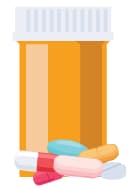HIV in the United States by Region: HIV Diagnoses
HIV diagnoses is one of the six Ending the HIV Epidemic in the U.S. indicators. HIV diagnoses refers to the number of people who received an HIV diagnosis each year.


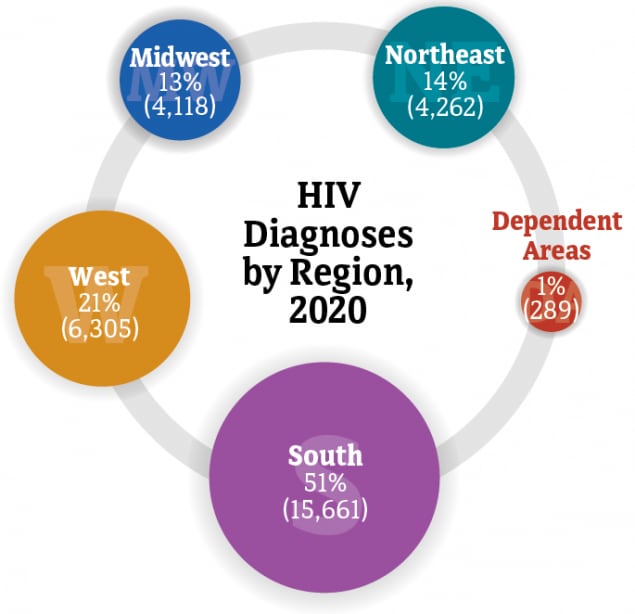
Data for 2020 should be interpreted with caution due to the impact of the COVID-19 pandemic on access to HIV testing, care-related services, and case surveillance activities in state and local jurisdictions.
* Among people aged 13 and older.
Source: CDC. Diagnoses of HIV infection in the United States and dependent areas, 2020. HIV Surveillance Report 2022;33.
The South’s larger and more geographically dispersed population of people living with HIV creates unique challenges for prevention and treatment.
Understanding the places and populations that are most affected by HIV allows the federal government to allocate its resources to the geographic areas where they are needed most, while still supporting a basic level of HIV education and prevention for everyone across the country.
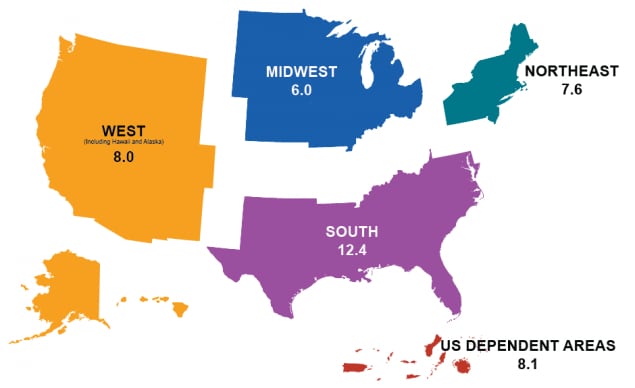
Data for 2020 should be interpreted with caution due to the impact of the COVID-19 pandemic on access to HIV testing, care-related services, and case surveillance activities in state and local jurisdictions.
* Rates are per 100,000 people.
† Among adults, adolescents, and children under the age of 13.
Source: CDC. Diagnoses of HIV infection in the United States and dependent areas, 2020. HIV Surveillance Report 2022;33.
From 2016 to 2019, HIV diagnoses decreased 8% overall in the US and dependent areas. But trends varied by region.
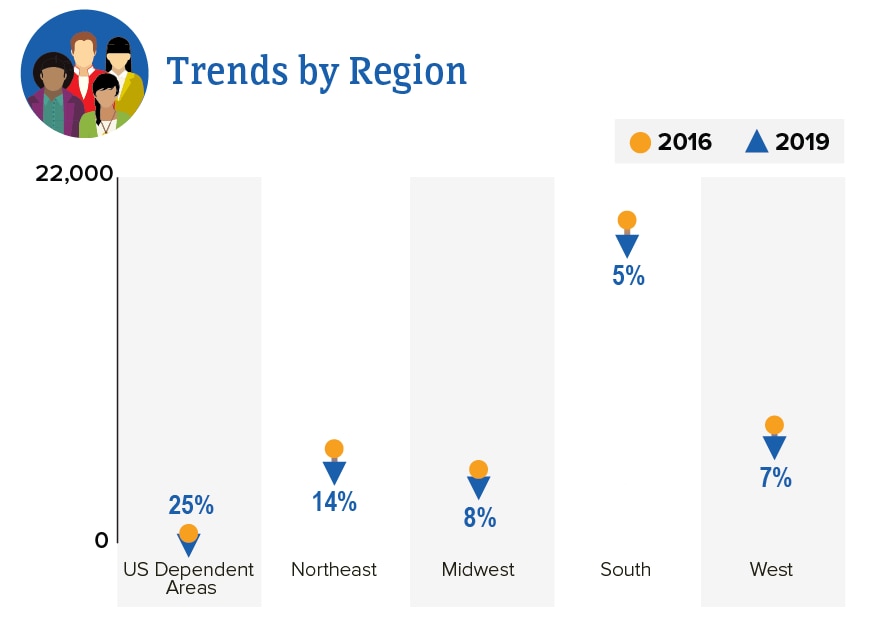
* There were large declines in regions with fewer diagnoses.
† Among people aged 13 and older.
Source: CDC. Diagnoses of HIV infection in the United States and dependent areas, 2020. HIV Surveillance Report 2022;33.
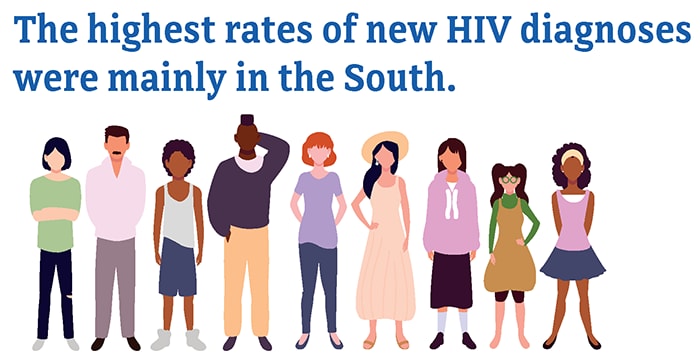
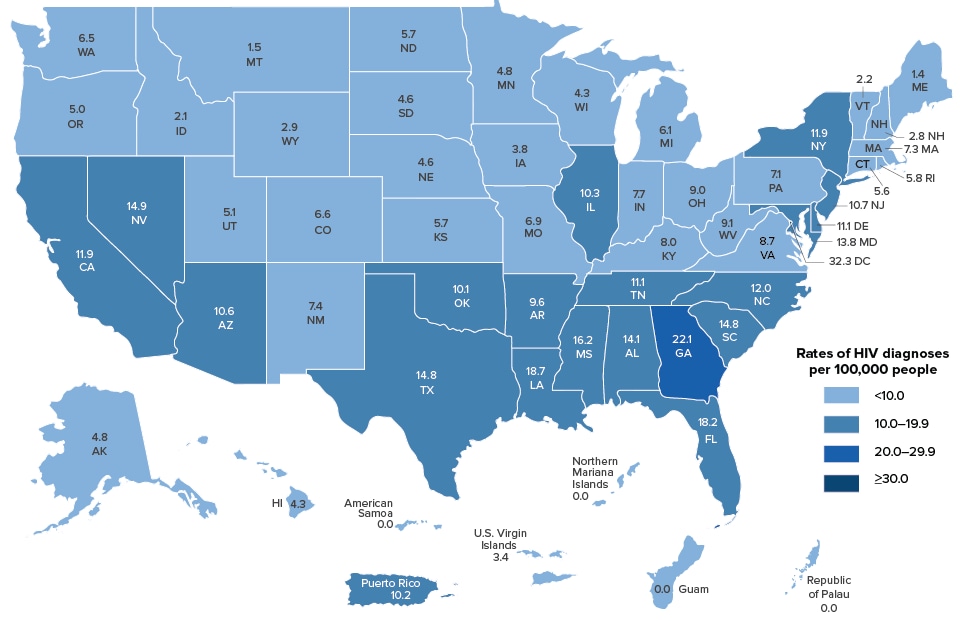
Data for 2020 should be interpreted with caution due to the impact of the COVID-19 pandemic on access to HIV testing, care-related services, and case surveillance activities in state and local jurisdictions.
* Among people aged 13 and older.
Source: CDC. New Diagnoses of HIV infection in the United States and dependent areas, 2020. HIV Surveillance Report 2022;33.
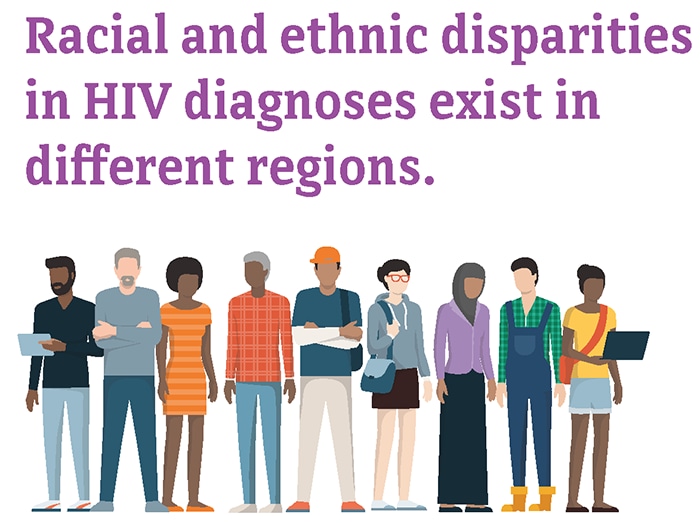
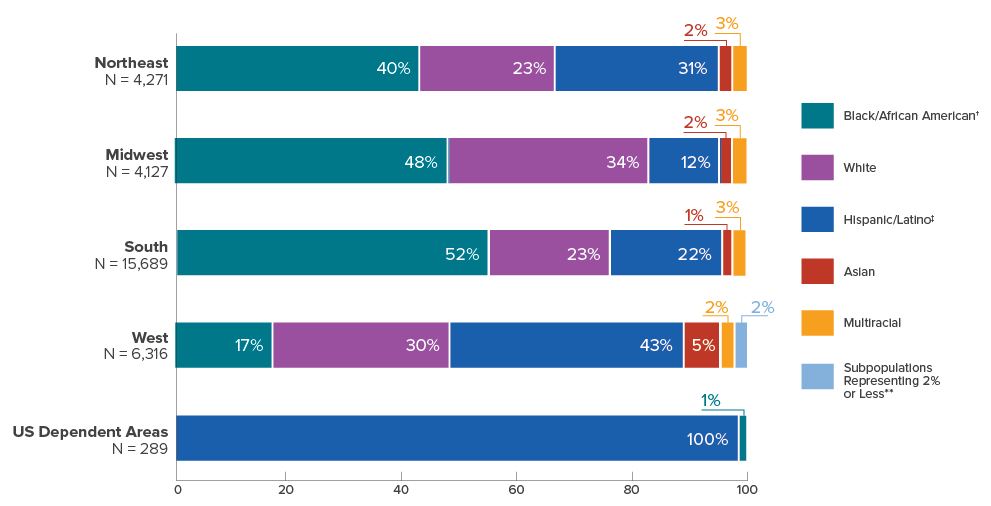
Data for 2020 should be interpreted with caution due to the impact of the COVID-19 pandemic on access to HIV testing, care-related services, and case surveillance activities in state and local jurisdictions.
Totals may not equal 100% due to rounding.
* Among adults, adolescents, and children under the age of 13.
† Black refers to people having origins in any of the Black racial groups of Africa. African American is a term often used for people of African descent with ancestry in North America.
‡ Hispanic/Latino people can be of any race.
** Subpopulations representing 2% or less of all people who received an HIV diagnosis in 2020 are combined in this chart.
Source: CDC. Diagnoses of HIV infection in the United States and dependent areas, 2020. HIV Surveillance Report 2022;33.
- CDC. Diagnoses of HIV infection in the United States and dependent areas, 2020. HIV Surveillance Report 2022;33.
- CDC. Estimated HIV incidence and prevalence in the United States 2015–2019 [PDF – 2.6 MB]. HIV Surveillance Supplemental Report 2021;26(1).
- CDC. Monitoring selected national HIV prevention and care objectives by using HIV surveillance data—United States and 6 dependent areas, 2020. HIV Surveillance Supplemental Report 2022;27(3).
